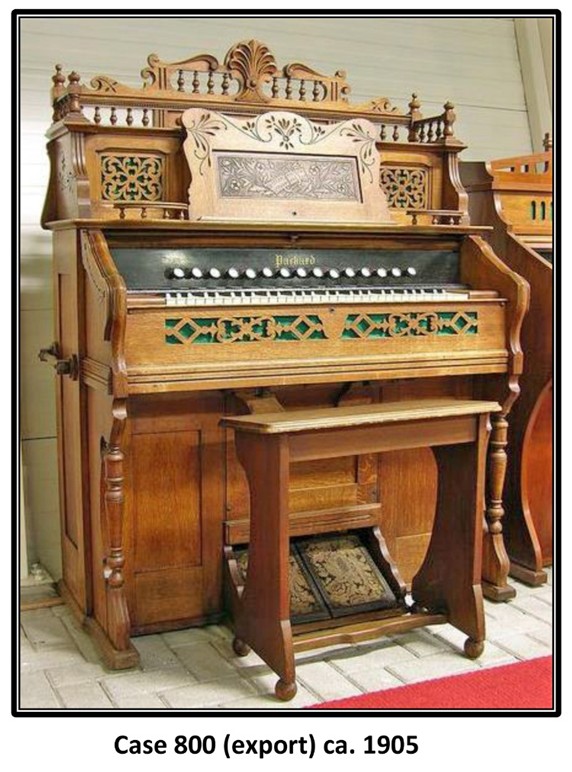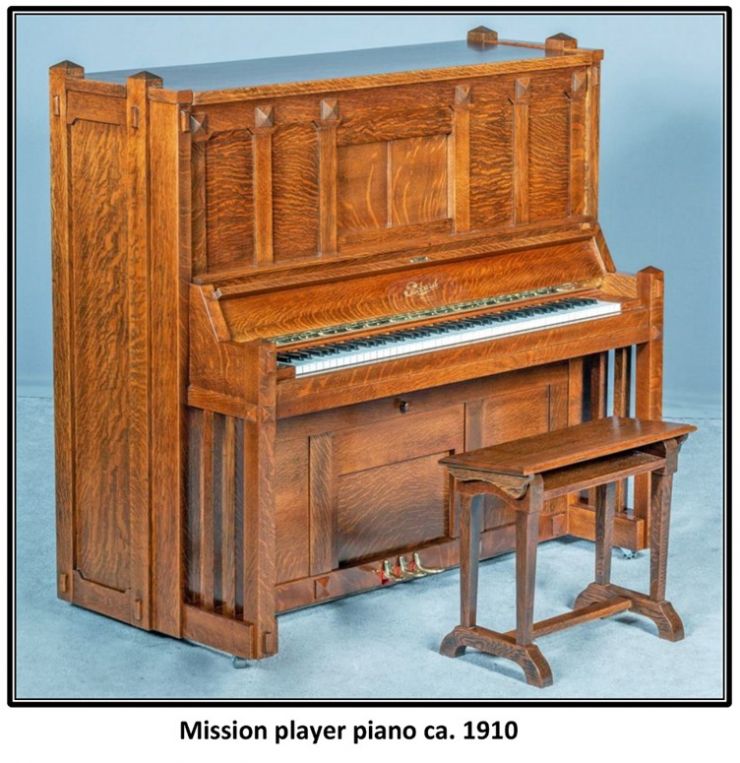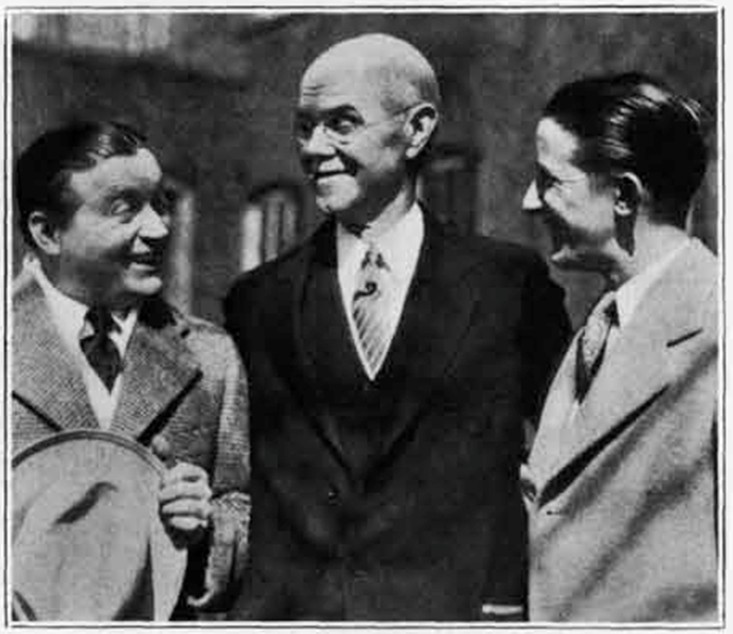The Packard Legacy
The Packard company had a long history of being involved in the community. They didn’t just build organs and pianos, they also built relationships, and as a later slogan indicated, they built harmony into the factory and into their instruments.
The new Industrial Policy developed during the unrest of 1912 became instrumental in the future direction of the company. Frank V. Kelly, manager of the Packard Music House in 1929, wrote an article for the Presto-Times about how it influenced the Packard sales strategy and community involvement:

"First, last, and all the time we promoted the music lesson plan of piano classes, the Packard-Curtis system; second, we went out into Allen County and organized bands in each and every centralized school; third, we made a hook-up arrangement with the European School of Music, of our own city, whereby some two hundred teachers registered all their pupils, and last but not least we were partially instrumental in having the Sherwood School canvass in and around within a radius of sixty miles of Fort Wayne.
"What we have undertaken to do is well known. From the laboratory we got our plan for our building [Industrial Democracy]; we then whipped our organization into shape. Then proceeded to build the very best piece of merchandise it was humanly possible to build, with aeroplane quality at submarine prices. Next came the piano classes; contact with the children was the second cornerstone; third was the band, which taking the name of Packard into all the public schools was the third cornerstones; fourth was the violin classes and talks by Mr. Alberts, of The European School of Music, over the radio….
"Stop and think what the radio today is doing for the dealer; not from the point alone of merchandising radio, but the message carried into the highways and by-ways. The farmer naturally has his day dreams and looks forward to the day when his Billy or Jenny may be broadcasting. He also hears the better instruments and is brought to the full realization that music is no better than the instrument it is played upon. He today goes into the market to buy not along the old lines of how cheap he can buy, but politely tells you he wants a piano with a good tone and a good action….
"The Packard people have for years used as their slogan, “If there is no harmony in the factory there will be none in the piano,” and the writer would like to add that the quicker the American piano manufacturer and dealer starts boosting for music and gets young America in tune with itself and assists in bringing out some of the hidden talent, so much quicker will our business again reach the pinnacle of where it belongs.
"We recently had at our factory as guests the two best-known radio broadcasters, I believe, there are in this country, the famous pair, Jack and Gene from the Crosley Radio Station in Cincinnati.
"Gene says that the reason he can take so well the part of Jake and Lena is due to the pleasure and satisfaction that he, as Gene, gets out of the piano. It sure did us all good to meet these two wonderful boys and a picture of the triumvirate of harmony is printed with this story…(Fig. 30)
Paul E. Gallmeier and the Packard Piano Company, Inc.
When The Packard Piano Company finally succumbed to the depression in 1932, Wilbert B. Marshall and Paul E. Gallmeier purchased the liquid assets of the defunct company and organized the Packard Piano Company, Inc. A year later, after incorporation, Mr. Marshall died unexpectedly. Gallmeier continued in his position as treasurer and secretary of the company, while Marshall’s wife Rebecca, and son Wilbert, Jr., became president and vice president respectively.
The company continued the manufacture and retail of pianos until 1952. Paul retired that year and sold the rights to the Packard name to Story & Clark Piano Company. This ended the Packard legacy as a manufacturing entity in Fort Wayne, Indiana.

"Several years ago a national magazine tabbed Fort Wayne as the “happiest” city in the nation. It could be that this reputation is a by-product of one of the city’s first leading industries – the Packard Piano Co.
"For while Packard gained a world-wide reputation for manufacturing pianos which were “valued for musical quality of tone and most exquisite workmanship in all details,” the company also established policies between employer and employe which are fairly recent additions to some industries today.
"The happy, almost family-like atmosphere at the Packard factory was as much of a company trademark as the high quality of its musical instruments.
"As a good percentage of Fort Wayne’s population in the late 1800s and early 1900s at one time or another worked there, it could well be that the alleged happy state of mind of today’s population is a carry over from pleasant working conditions at the old Packard….
"Packard was one of the first companies to work the eight-hour day. Under its“Industrial Democracy” plan, employes received such benefits as group insurance, a sick and accident fund, the opportunity to borrow money and financial reward for suggestions that were accepted by the management. These benefits were available to Packard employes in 1914….
"At full production, Packard would produce between three and four thousand pianos a year. It took approximately nine months to make a piano, starting from the time lumber was stored to dry….
"After 59 years of operation, the company went into receivership on Feb. 6, 1930, one of many victims of the great depression. The death blow resulted from a by-product, cabinets for radio manufacturers. The radio companies also went under and couldn’t pay for the cabinets they had on order.
"When the company went into receivership, Wilbert Marshall and Paul E. Gallmeier bought all of the assets with the exception of plant and real estate and continued to sell Packard pianos retail. Gallmeier went to work for Packard in 1913 [as a clerk, then cost bookkeeper] and was office manager when the company folded. Marshall joined Packard in 1927 as sales manager.
"Marshall died shortly after the two went into partnership and Gallmeier continued in business until he retired in 1952. Gallmeier sold the Packard Trade Mark to another man-ufacturer. Ralph Jennings is the local retailer for the product today [made by Story & Clark].
____________________________________________________________________
What remains of the Packard legacy?
The factory begun in 1871 and expanded over the years is now a vacant property known as Packard Park. The new, exciting Packard Music House which opened in 1920 has long since been torn down and new businesses have taken its place. Only the original Packard store exterior located on S. Calhoun Street remains. (It currently houses a real estate office.) Are people aware of what used to be housed there? Or are the products that were sold and brought joyful music and “harmony” into peoples’ homes of Fort Wayne remembered?
Besides the few remnants of physical properties of the former Packard Company, there remain hundreds, if not thousands of instruments, both organs and pianos, scattered around the globe. Some of them are treasured family heirlooms. Some are enjoyed by a new generation drawn to their exquisite beauty and musical qualities. Still others, I am reluctant to report, are finding their way to the landfill, or are repurposed as decorations or home bars.
Perhaps the greatest legacy is the personal one gifted to future generations, a legacy of a job well done by workers who caught the true spirit of “Industrial Democracy,” and left the work environment a better place for all of us: truly a legacy worth remembering and honoring by our generation and those to come beyond the confines of Fort Wayne!
It is my hope that in some small way I have helped to bring to our collective memories the legacy that is Packard, both the instruments and the business policy that transformed, not only the factory and its policies, but also the workers and their families and still speaks to us today.

Fig. 30. THE HARMONY TRIO: Left, Jack; center, A. S. Bond, president of the Packard Piano Co.; and Gene.
***********************************************************************************************************************
Production Figures
Using information from extensive data collection found in Volumes One (2020) & Two (2021) of The Fort Wayne Organ Company & the Packard Legacy by Charles Robison, the following figures approximate the number of instruments produced by the Packard Company:
Packard Organs: 91,374 (1872 – 1913)
Packard Pianos: 43,672 (1895 – 1932)
The number of Bond pianos produced in addition to Packard pianos is unknown.
